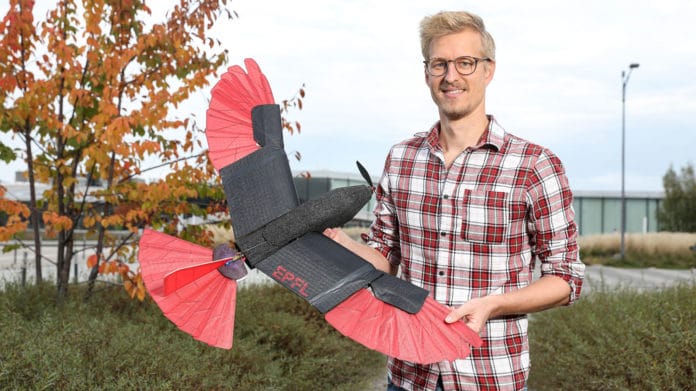Making a drone fly longer is the goal of many research centers. The weight and autonomy of the drone are closely linked to its battery. Hybrid engines allow drones to fly for hours, as we recently evidenced for Quaternium’s HYBRiDX 2.1, which performs a record 10-hour 14-minute flight.
Now, engineers at the Laboratory of Intelligent Systems of EPFL have developed a drone with a feathered wing and tail that give it unprecedented flight agility. The team drew the design inspiration from the northern goshawk – a fast, powerful raptor that flies effortlessly through forests.
The robotics researchers carefully studied the shape of the goshawk’s wings and tail and its flight behavior to develop a drone with similar characteristics. Like the raptor, the drone knows how to combine the movements of the wings and the tail to change direction quickly, but also to hover to save energy when necessary.
“Our design extracts principles of avian agile flight to create a drone that can approximate the flight performance of raptors, but also tests the biological hypothesis that a morphing tail plays an important role in achieving faster turns, decelerations, and even slow flight,” says Enrico Ajanic, the first author and Ph.D. student in Floreano’s lab.
The drone can adjust the shape of its wing and tail thanks to its artificial feathers. It changes the shape of its wing and tail to change direction faster, fly slower without falling to the ground, and reduce air resistance when flying fast. The raptor-inspired drone uses a propeller for forward thrust instead of flapping wings because it is more efficient and makes the new wing and tail system applicable to other winged drones and airplanes.
“The drone we just developed is somewhere in the middle. It can fly for a long time yet is almost as agile as quadrotors,” says Floreano. This combination of features is especially useful for flying in forests or in cities between buildings. Due to a large number of possible configurations of wing and tail geometries, it is not easy to fly this drone. To properly master a large number of wing and tail configurations, the researchers are working to develop algorithms based on artificial intelligence in the flight system of the drone. It is with this AI that he will be able to adapt semi-automatically to different flight configurations.
What a bird drone like this offers compared to quadcopters is a longer flight time. This makes it suitable for certain applications such as the delivery of medical supplies over large distances or the survey of agricultural land.
